"I hope that you will pardon me for this unusual posture of sitting down during the presentation of what I want to say, but I know that you will realize that it makes it a lot easier for me not to have to carry about ten pounds of steel around on the bottom of my legs; and also because of the fact that I have just completed a fourteen-thousand-mile trip."
Address to Congress on Yalta (March 1, 1945)
Franklin Delano Roosevelt
Last photo of FDR
Last Painting of FDR
(unfinished)
"Dr. Ross T. McIntire was the White House physician in charge of President's Roosevelt's health. Dr. McIntire predicted that the President would be a "different man" when he returned:
When Dr. Bruenn telephoned on Thursday, April 12, his report was most optimistic. The President had gained back eight of his lost pounds and was feeling so fit that he planned to attend an old-fashioned Georgia barbecue in the afternoon and a minstrel show that evening for the Foundation's patients. Every cause for anxiety seemed to have lifted, and given another lazy, restful week, there was no reason why he should not return to Washington on April 20 to greet the Regent of Iraq.
(McIntire, White House Physician, p. 240).
Nicholas Robbins (real name Nicholas Kotzubisky) was the driver and photographer for Elizabeth Shoumatoff. Roosevelt was having his portrait painted by Russian born artist Elizabeth Shoumatoff when he took a break for lunch:
At twenty minutes to one, Arthur Prettyman, the valet, came in and set a cup of gruel, a pitcher of cream, and a glass with a green fluid beside the president. FDR grimaced and without lifting his eyes from his reading, downed the latter, a vile concoction that was supposed to increase his appetite. Daisy got up, poured cream into the gruel, and mixed it. Franklin absently took a few mouthfuls, still absorbed in his papers. (Persico, Franklin & Lucy, p. 339).
After drinking the vile concoction, Roosevelt complained of a terrible headache."
http://www.reformation.org/assassination-of-president-roosevelt.html
The Assassination Of President Roosevelt!!
|
"And the conspiracy was strong" (II Samuel 15:12).
|
On March 30, 1945, President Roosevelt arrived in Warm Springs, Georgia, for a 2-week vacation. Just 12 days later he was assassinated by poisoning. The President was only 63-years-old.
Just like the assassination of our beloved President Lincoln, the fingerprints of the British Secret Service are all over this assassination . . . and its outcome.
Dr. Ross T. McIntire was the White House physician in charge of President's Roosevelt's health. Dr. McIntire predicted that the President would be a "different man" when he returned:
When Dr. Bruenn telephoned on Thursday, April 12, his report was most optimistic. The President had gained back eight of his lost pounds and was feeling so fit that he planned to attend an old-fashioned Georgia barbecue in the afternoon and a minstrel show that evening for the Foundation's patients. Every cause for anxiety seemed to have lifted, and given another lazy, restful week, there was no reason why he should not return to Washington on April 20 to greet the Regent of Iraq. (McIntire, White House Physician, p. 240).
Navy admiral McIntire was in Washington City at that time, but the President's personal physician, a cardiologist named Dr. Howard Bruenn, was with the President in Warm Springs.
|
Nicholas Robbins (real name Nicholas Kotzubisky) was the driver and photographer for Elizabeth Shoumatoff. Roosevelt was having his portrait painted by Russian born artist Elizabeth Shoumatoff when he took a break for lunch:
At twenty minutes to one, Arthur Prettyman, the valet, came in and set a cup of gruel, a pitcher of cream, and a glass with a green fluid beside the president. FDR grimaced and without lifting his eyes from his reading, downed the latter, a vile concoction that was supposed to increase his appetite. Daisy got up, poured cream into the gruel, and mixed it. Franklin absently took a few mouthfuls, still absorbed in his papers. (Persico, Franklin & Lucy, p. 339).
After drinking the vile concoction, Roosevelt complained of a terrible headache.
|
Within minutes the President collapsed so Elizabeth called his physician, Navy commander Howard Bruenn. Doctors can be deadly and a medical assassination is a lot easier to hide than a bullet in the back of the head.
|
Margaret "Daisy" Suckley was another mistress of President Roosevelt who was present in the Roosevelt cottage at the time of his death.
|
Roosevelt referred to Hassett as 'the bishop" because he was a Jesuit and his liaison with the Roman hierarchy:
Twice more he (Dr. Bruenn) telephoned to Admiral McIntire. Once he left in the midst of the conversation with McIntire because George Fox called him. I felt that the end was fast approaching. Bruenn explained afterward that a few minutes before the President breathed his last, he and George Fox started artificial respiration and administered a stimulant. At 3:35, as I sat in the living room with Grace Tully, Laura Delano, and Margaret Suckley, the silencing of the dreadful breathing was a signal that the end had come, even before Dr. Bruenn emerged from the chamber of death. Thus a good man met the solemn day that awaits us all. (Hassett, Off the Record with FDR 1942 - 1945, p. 337).
Robbins, Shoumatoff, and Mercer were hustled out of the cottage by the U.S. Secret Service. Robbins and Shoumatoff returned to New York . . . while Mercer went to find her priest to obtain "absolution" after assassinating the President of the United States.
Violating Georgia state law, no autopsy was performed on the President, as his body was rushed back to Washington City for a quick funeral service, and then burial in Hyde Park, New York.
After poisoning, a human body emits a terrible odor and burial must be done rapidly . . . unless another body is substituted. The official cause of death was a cerebral hemorrhage.
From death to burial took only 70 hours!!
This must have been the fastest funeral of a President in the entire history of the nation.
|
|
Hitler heard the "great news" on Friday, April 13
At the beginning of April, Hitler was in the process of growing a beard for his planned escape to Argentina. His moustache would only take a minute to shave off . . . making his disguise complete.
On the morning of Friday, April 13, Hitler received a phone call from his propaganda chief Joseph Goebbels telling him that Roosevelt was dead.
|
Hitler was looking for a repeat of the "miracle" that saved Great British Spy Frederick in 1762:
The one break in the series of reports bearing bad news seemed to come when Joseph Goebbels called the morning of April 13. His voice cracking with excitement, he shouted breathlessly into the phone, "My Führer, I congratulate you! It is written in the stars that the second half of April will be a turning point for us. Today is Friday, April thirteenth!" Then he informed Hitler that President Roosevelt had died. A meeting with generals, ministers, and party leaders was called immediately, and in response to astrological ascendancies, conjunctions of the planets, and crossings in the quadrant, long extinguished hopes rose again. Holding a bunch of papers in his shaking hand, Hitler ran from person to person and, with an old man's manic excitability, held out the news reports, saying, "Here! You didn't want to believe it. Now tell me, who was right?" He reminded them of the House of Brandenburg and the miracle that saved Frederick the Great in 1762, when the death of the Czarina Elizabeth changed the course of the Seven Years' War. Another miracle has occurred, he said. "The war is not lost! Here, read this! Roosevelt is dead." (Fest, Inside Hitler's Bunker, pp. 13-14).
Hitler's hero was the great British spy Frederick and he was referring to the sudden death of Empress Elizabeth in 1762.
Joseph Stalin understood immediately that Roosevelt was murdered and that the agreements signed at Yalta between the Big Three would be null and void. Germany could surrender to the Allies, and Hitler and his henchman might yet escape their just retribution.
Stalin ordered an immediate all out assault on Berlin with absolutely no consideration for the casualties involved (about 80,000 Russians killed, 275,000 wounded). Berlin was finally taken by the Russians on May 2, 1945.
|
Stalin ordered an immediate all out assault on Berlin with absolutely no consideration for the casualties involved (about 80,000 Russians killed, 275,000 wounded). Berlin was finally taken by the Russians on May 2, 1945.
The "miracle" that Hitler was expecting never came to save Berlin from invasion . . . but Adolf and Eva escaped to Argentina. However, the outcome of the war with Imperial Japan was totally different.
The media in the U.S. never mentioned that Hitler might be behind the assassination. They did mention that Russian born Elizabeth Shoumatoff might be a spy sent by Joseph Stalin to poison the President.
Another British Secret Service assassination!!
The parallels between the assassination of President Lincoln and President Roosevelt are remarkable. In both cases, a war of unprecedented destruction was ending, with the forces of evil on the retreat everywhere.In both cases, the losers hoped to reverse the course of the war by assassinating the Commander-in-Chief and replacing him with their puppet. John Wilkes Booth was licensed to kill President Lincoln, and the British Secret Service had penetrated every single governmental department in Washington City.
|
Dahl ingratiated himself with Eleanor Roosevelt, and he constantly spied on Vice President Henry A. Wallace, whom he called a "Communist."
Dahl operated out of the British Embassy and his "literary talents" and "good looks" enabled him to bed top Washington society women. In 1943, he spent a weekend with the Roosevelts in Hyde Park, New York.
|
|
Dahl was amazed at the extraordinarily elaborate security precautions Stephenson ordered to safeguard his secret history. He insisted that all the work be done at their isolated Camp X site, on the northernshore of Lake Ontario, where he could guarantee that both his papers and personnel were protected. "The thing I always remember," said Dahl, "was how Bill had all these archives sent up from New York in some sort of wonderful security truck with an escort." The operation was vintage Stephenson, taking place under the cover of darkness, with the armed guards stealthily transferring hundreds of cartons of files into trucks waiting outside Rockefeller Plaza sometime after midnight. Ten hours later, a Canadian army captain handed the border guards his name and code number, and the convoy was waved across the border into Canada, where it proceeded to the Oshawa training facility. Stephenson had already been using some of the school's outbuildings as cold storage for some BSC records, so in his mind it was a logical place to set up shop. (Conant, The Irregulars: Roahl Dahl and the British Spy Ring in Wartime Washington, pp. 297-298).
No wonder MI6 went to such extraordinary lengths to hide the TRUTH....If the American people ever found out that the British assassinatedanother President, that would be the end of the "special relationship."
Vital link
References
Conant, Jennet. The Irregulars: Roald Dahl and the British Spy Ring in Wartime Washington. Simon & Schuster, New York, 2008.
Fest, Joachim, Inside Hitler's Bunker: the Last Days of the Third Reich. Farrar, Straus and Giroux, New York, 2002.
Goldsmith, Harry, S. A Conspiracy of Silence: the Health and Death of Franklin D. Roosevelt. iUniverse, Inc., New York, 2007.
Hanson, Bill. Closely Guarded Secrets: the Assassination of FDR, Japan's Atomic Bomb, the Massacre at Port Chicago. Xlibris Corporation, 2000.
Hassett, William D. Off The Record With FDR 1942 - 1945. George Allen & Unwin Ltd. London, 1960.
Klara Robert, FDR's Funeral Train. Palgrave Macmillan, New York, 2010.
McIntyre, Ross T, White House Physician. G. P. Putnam's Sons, New York, 1946.
Persico, Joseph E. Franklin & Lucy. Random House, New York, 2008.
Shoumatoff, Elizabeth. FDR's Unfinished Portrait. University of Pittsburgh Press, Pittsburgh, PA, 1990.
Ward, Geoffrey C. Closet Companion: The Unknown Story of the Intimate Friendship Between FDR and Margaret Suckley. Houghton Mifflin Company, New York, 1995.
Copyright © 2013 by Patrick Scrivener
The planning for the assassination of President Roosevelt began at the 1944 Democratic National Convention held in Chicago, Illinois, from July 19–21. President Roosevelt was running for an unprecedented 4th term and his popular Vice President was Henry A. Wallace.
In April 1944, President Roosevelt was assigned a new doctor, a young Navy lieutenant named Dr. Howard Brueen.
It was very unusual that the President would be accompanied by a low ranking lieutenant. Obviously, skill in the use of poison was all that was necessary for Dr. Bruenn.
Roosevelt stayed away from the Convention because he was under tremendous pressure to get rid of his faithful Vice President and replace him with "Assistant President" Jimmy Byrnes. The President's wife Eleanor despised Jimmy Byrnes and the pushy Roman hierarchy so the tug of war was putting tremendous stress on the President.
Vice President Henry A. Wallace was a plain spoken farmer's son from Iowa . . . and he was just too honest to engage in the strong conspiracy. He fully expected to be re-nominated for Vice President at the Convention.
MI6 agent Roaldl Dahl became a close "friend" of Henry Wallace. Unknown to Wallace, Dahl was spying on him and sending his private papers to Sir William Stephenson at 30 Rockefeller Plaza:
 A less stressful looking President Roosevelt making his State of the Union Address on Jan. 11, 1944. |
|  LIfe magazine photo of Roosevelt making his nomination speech via radio on July 20, 1944. The man seated on the left is Navy lieutenant Dr. Howard Bruenn. |
It was very unusual that the President would be accompanied by a low ranking lieutenant. Obviously, skill in the use of poison was all that was necessary for Dr. Bruenn.
Roosevelt stayed away from the Convention because he was under tremendous pressure to get rid of his faithful Vice President and replace him with "Assistant President" Jimmy Byrnes. The President's wife Eleanor despised Jimmy Byrnes and the pushy Roman hierarchy so the tug of war was putting tremendous stress on the President.
Vice President Henry A. Wallace was a plain spoken farmer's son from Iowa . . . and he was just too honest to engage in the strong conspiracy. He fully expected to be re-nominated for Vice President at the Convention.
|
Marsh had given him a draft of a pamphlet written by his close friend Henry Wallace. Entitled "Our Job in the Pacific," it summarized the vice president's postwar goals, among them international control of the airways, economic assistance for the industrial development of Asia, and the demilitarization of Japan. Wallace was also in favor of 'the emancipation of colonial subjects" in the British Empire, including India, Burma, and Malaya. Dahl could feel his "hair stand on end." Dahl immediately realized the document's importance, and knowing that his superiors would want to see it, he excused himself saying that he was going to finish reading it downstairs. He quickly phoned his BSC contact, explained the urgency of the situation, and convinced him to meet him on the corner as soon as possible. The agent knew something was up and materialized on the street in front of Marsh's house in a matter of minutes.
Dahl sneaked out of the house and handed the document through his car window, warning his partner in crime to be back in half an hour or there would be hell to pay. "He flashed off," recalled Dahl, "and I'm around downstairs, near the lavatory door, and if the chap upstairs had come down looking for me saying, `have you finished reading it?' then I'd of been in the lavatory you see, saying `I'm sorry I'm caught short."' As it turned out, the agent went straight to the BSC's Washington offices to make copies and made it back within the allotted time. Dahl nipped back out, collected the paper, and no one was the wiser. (Conant, The Irregulars: Roald Dahl and the British Spy Ring in Wartime Washington, pp. 121-122).
The British spy ring, led by Dahl, made sure that Wallace was not re-nominated for Vice President.
A ferocious fight broke out in Chicago between the supporters of Vice President Wallace and the supporters of Jimmy Byrnes. Everybodyseemed to know that Roosevelt would not survive his 4th term so his Vice President would become President.
Jimmy Byrnes arrived at the convention on the morning of July 20, fully confident that he would be the next Vice President . . . and then the next President of the United States:
A ferocious fight broke out in Chicago between the supporters of Vice President Wallace and the supporters of Jimmy Byrnes. Everybodyseemed to know that Roosevelt would not survive his 4th term so his Vice President would become President.
|
Across town Byrnes was enjoying a cheerful breakfast with Mayor Kelly and Hannegan. They gave him some further details of Roosevelt's reaction when FDR was told that the danger of losing the black vote with Byrnes had been exaggerated. "Well, you know Jimmy has been my choice from the very first," they quoted Roosevelt as having said to them. "Go ahead and name him." Hannegan did add that Roosevelt had requested that Byrnes' nomination first be discussed with the leadership of the CIO at the convention, but this request was in Hannegan's opinion simply a courtesy of prior notification. Later that same day, after Byrnes had left the breakfast, Mayor Kelly met with Alben Barkley, majority leader of the Senate, and the mayor told Barkley to pass the word that Roosevelt wanted Byrnes and that "it was in the bag for Jimmy." (Robertson, Sly and Able: A Political Biography of James F. Byrnes. p. 354).
Byrnes was to face a big disappointment however, as nothing could persuade the absent Roosevelt to name him as his heir apparent.
Jimmy Byrnes was one of the few people at the Convention who knew that a new deadly weapon called the atomic bomb was under development. This weapon could change the course of the war . . . and its sole possessor could rule the world unchallenged.
Roosevelt would not give his final word to Vice President Wallace . . . or Jimmy Byrnes . . . so a compromise candidate was chosen named Harry Truman.
Truman came to the Convention as an ardent Byrnes supporter and he had no real Presidential ambitions....Commander-in-chief Roosevelt could not make a decision so Truman was nominated by default.
Jimmy Byrnes was one of the few people at the Convention who knew that a new deadly weapon called the atomic bomb was under development. This weapon could change the course of the war . . . and its sole possessor could rule the world unchallenged.
|
Truman came to the Convention as an ardent Byrnes supporter and he had no real Presidential ambitions....Commander-in-chief Roosevelt could not make a decision so Truman was nominated by default.
|
Having failed to gain the nomination, Jimmy Byrnes left the Convention in disgust....is Presidential ambitions were still very much alive . . . and there was another door to the Presidency: the office of Secretary of State.
Jimmy Byrnes became Truman's Secretary of State!!
Just 2 hours after the assassination, senator Harry Truman visited the White House to be sworn in as the new President. No Bible could be found anywhere until the chief receptionist located a Douay-Rheims Version in William Hassett's desk:He looked at the Chief Justice. Harlan Stone said that the chief receptionist had gone to look for a Bible. Truman nodded. The clock on the wall pointed to 7:05. The waiting time was an embarrassment. Bill Simmons came back, saying that he had searched everywhere and had found a Roman Catholic Bible in William Hassett's desk. Mr. Truman said it would do. The Chief Justice motioned for the Truman women to come closer. Harlan Stone intoned: "I, Harry Shippe Truman . . ." This was wrong; the Chief Justice had been told that the S stood for Shippe, Truman's grandfather's name. It stood for nothing. The new President had no middle name. He said, "I, Harry S. Truman . . ." Less than two minutes later, it was over. No one, including the Trumans, looked joyful. The handshaking was solemn. Steve Early asked permission to bring the news photographers in. The event, he thought, should be preserved for posterity. Truman had an appreciation of that word. The cameramen came in. The photos they made show the wall clock at 7:09 P.M. (Bishop, FDR'S Last Year, p. 609).
Then as now a real Bible was a rare book in Washington City.
|
By appointing Jimmy Byrnes as Secretary of State, Truman was putting his own life at risk. Here is the order of succession to the Presidency as it stood in 1945:
Act of 1792
|
Act of 1886
|
| 1. President. | 1. President. |
| 2. Vice President. | 2. Vice President. |
| 3. President Pro Tempore of Senate. | 3. Secretary of State. |
| 4. Speaker of the House. | 4. Secretary of the Treasury. |
Truman realized right away that he could be the next Presidential victim of the poison cup . . . so he called on Congress to immediately change the law back to the original 1792 order of succession.
On July 17, 1945, the atomic bomb was tested for the SECOND time in Alamogordo, New Mexico.
The Pentagon was frantic to get Japan to surrender before the Russians entered the war, and they were itching to use their new super weapon to force a quick Japanese surrender!!
In order to prevent President Truman from meeting with the atomic scientists, he was sent out of the country to Potsdam, Germany, to meet with Stalin and Churchill. Unlike Roosevelt, who flew to his meetings, Truman left by slow moving ship on July 6, and did not return until August 7—the day after the bombing of Hiroshima.
The real reason why the bombs were used were to force the Japanese to surrender before the Soviets had a chance to invade Manchuria and reoccupy the Kurile Islands, which were lost to Russia during the Russo-Japanese War of 1905.
By 1947, it was too late to bring back the hundreds of thousands killed in Hiroshima and Nagasaki. Truman continued to be a puppet of the British by allowing Churchill to start the Cold War and NATO (North Atlantic Terrorist Organization).
Truman was also a puppet of the British by agreeing to the establishment of a British spying station in the Mideast known as the state of "Israel."
After the assassination of President Kennedy, the top secret 25th Amendment was passed that allows the President to appoint his Vice President.
Jimmy Byrnes totally dominated President Truman!!
Truman knew absolutely nothing about the atomic bomb . . . as Roosevelt had failed completely to keep him in the loop.
Just as the most destructive war in the history of the world was ending, the President of the United States was taken on an ocean voyage . . . and then sightseeing in Berlin, Germany!!
|
The Pentagon was frantic to get Japan to surrender before the Russians entered the war, and they were itching to use their new super weapon to force a quick Japanese surrender!!
In order to prevent President Truman from meeting with the atomic scientists, he was sent out of the country to Potsdam, Germany, to meet with Stalin and Churchill. Unlike Roosevelt, who flew to his meetings, Truman left by slow moving ship on July 6, and did not return until August 7—the day after the bombing of Hiroshima.
|
Truman finally fired Jimmy Byrnes in 1947
In January 1947, President Truman took a momentous step and fired Jimmy Byrnes. Congress finally passed the succession act in 1947, and this removed the Secretary of State from 3rd in line for the Presidency:
Act of 1792
|
Act of 1886
|
Act of 1947
|
| 1. President. | 1. President. | 1. President. |
| 2. Vice President. | 2. Vice President. | 2. Vice President. |
| 3. President Pro Tempore of Senate. | 3. Secretary of State. | 3. Speaker of the House. |
| 4. Speaker of the House. | 4. Secretary of the Treasury. | 4. President Pro Tempore of Senate. |
Truman was also a puppet of the British by agreeing to the establishment of a British spying station in the Mideast known as the state of "Israel."
After the assassination of President Kennedy, the top secret 25th Amendment was passed that allows the President to appoint his Vice President.



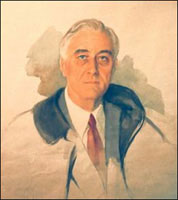
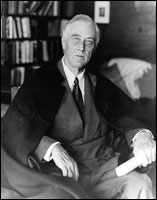
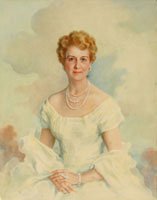
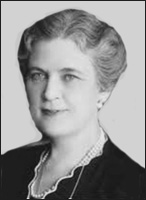






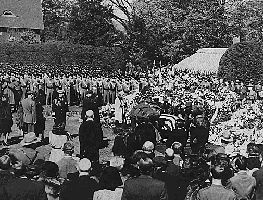


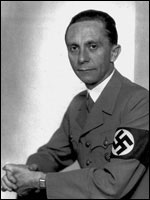
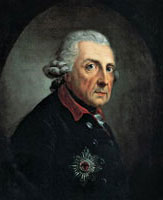


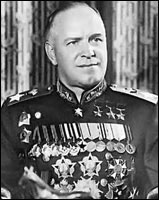










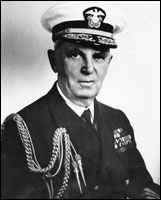









No comments:
Post a Comment